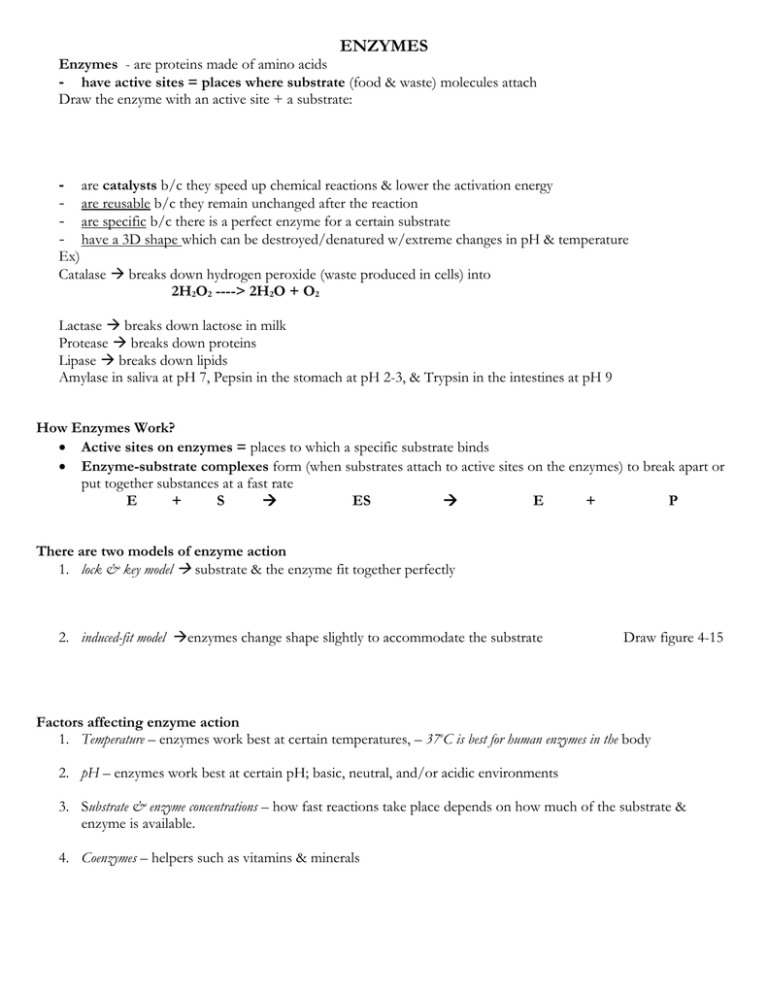ENZYMES
advertisement

ENZYMES Enzymes - are proteins made of amino acids - have active sites = places where substrate (food & waste) molecules attach Draw the enzyme with an active site + a substrate: - are catalysts b/c they speed up chemical reactions & lower the activation energy - are reusable b/c they remain unchanged after the reaction - are specific b/c there is a perfect enzyme for a certain substrate - have a 3D shape which can be destroyed/denatured w/extreme changes in pH & temperature Ex) Catalase breaks down hydrogen peroxide (waste produced in cells) into 2H2O2 ----> 2H2O + O2 Lactase breaks down lactose in milk Protease breaks down proteins Lipase breaks down lipids Amylase in saliva at pH 7, Pepsin in the stomach at pH 2-3, & Trypsin in the intestines at pH 9 How Enzymes Work? Active sites on enzymes = places to which a specific substrate binds Enzyme-substrate complexes form (when substrates attach to active sites on the enzymes) to break apart or put together substances at a fast rate E + S ES E + P There are two models of enzyme action 1. lock & key model substrate & the enzyme fit together perfectly 2. induced-fit model enzymes change shape slightly to accommodate the substrate Draw figure 4-15 Factors affecting enzyme action 1. Temperature – enzymes work best at certain temperatures, – 37oC is best for human enzymes in the body 2. pH – enzymes work best at certain pH; basic, neutral, and/or acidic environments 3. Substrate & enzyme concentrations – how fast reactions take place depends on how much of the substrate & enzyme is available. 4. Coenzymes – helpers such as vitamins & minerals




